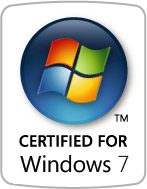
Use Custom when you want to replace your current operating system entirely; when you want to keep your current operating system and install Windows on an available, separate partition of your hard disk (multiboot); or when no operating system is currently installed.
Custom deletes your programs and settings. Back up any files and settings you want to keep so you can restore them after the installation. You must manually reinstall your programs when the installation is done.
Warning:
* If you delete or format a partition, all data on the partition is permanently deleted, including files as well as programs and settings.
* If there is an existing version of Windows on the partition you selected and you don’t format or delete the partition, user files are saved to a Windows.old folder on the partition. After the installation completes, you can browse to that folder.
* We still recommend you back up your user files to an external location before performing a custom installation. For example, if you have encrypted files, you might not be able to access them after installing Windows unless you’ve performed a backup. If you’ve backed up your user files and then successfully restored them after installing Windows, you can delete the Windows.old folder using Disk Cleanup.
1. Turn on your computer, insert the Windows installation disc into your computer's DVD or CD drive, and then do one of the following:
* If your computer already has an operating system installed and you don't want to create, extend, delete, or format partitions, go to step 2.
* If your computer doesn’t have an operating system installed, or if you want to create, extend, delete, or format partitions, restart your computer with the installation disc inserted in the DVD or CD drive. This causes your computer to start (or “boot”) from the installation disc. If you are asked to press a key to start from DVD or CD, press any key. If the Install Windows page is displayed, go to step 2.
* If the Install Windows page doesn’t appear and you're not asked to press a key to start from DVD or CD, you might need to set the DVD or CD drive to be the first startup device in the basic input/output system (BIOS). Here's how to do that:
Warning: Be careful when changing BIOS settings. The BIOS interface is designed for advanced users, and it’s possible to change a setting that could prevent your computer from starting correctly.
a. Turn on your computer, insert the Windows installation disc, and then restart your computer.
b. Newer computers usually display a startup (or boot) menu. On the startup menu, select "BIOS setup," or "BIOS settings," or something similar, and then press the appropriate key when prompted to display the BIOS setup screen.
Procedures vary depending on the BIOS manufacturer. Usually, you must press a key (such as F2, F12, Del, Esc) or a key combination immediately after you turn on your computer but before Windows starts. For more information, check the information that came with your computer or go to the computer manufacturer's website.
c. On the BIOS setup screen, select the option called “Boot order,” or something similar.
d. Select your DVD or CD drive as the first startup device, save the setting changes, and then exit the BIOS.
e. Restart your computer, and then start Windows from the installation DVD or CD as previously described.
2. To see if your computer can run Windows 7, open Windows 7 Upgrade Advisor by clicking Check compatibility online. (This option does not appear if you started your computer using the installation DVD or CD.)
3. On the Install Windows page, follow the instructions that appear, and then click Install now.
4. On the Get important updates for installation page, we recommend getting the latest updates to help ensure a successful installation and to help protect your computer against security threats. You will need an Internet connection to get these updates. (Note: This page will not appear if you start Windows from the installation disc.)
5. On the Please read the license terms page, if you accept the license terms, click I accept the license terms, and then click Next.
6. On the Which type of installation do you want? page, click Custom.
7. On the Where do you want to install Windows? page, do one of the following:
* If you want to accept the partition that Windows chooses, and you don't want to install Windows on a specific partition or create partitions on your hard disk, click Next to begin the installation.
* If you want to install Windows on a specific partition with enough free space, select the partition you want to use, and then click Next to begin the installation. (If you want to keep your existing version of Windows and create a multiboot configuration, be sure to install Windows on a different partition from the one where your current version of Windows is installed.)
8. If you want to create, extend, delete, or format a partition (and you started Windows from the installation disc), click Drive options (advanced), click the option you want, and then follow the instructions. Continue to follow the instructions.
Important: Be sure to install new antivirus software after the installation is complete.






0 comments
Post a Comment